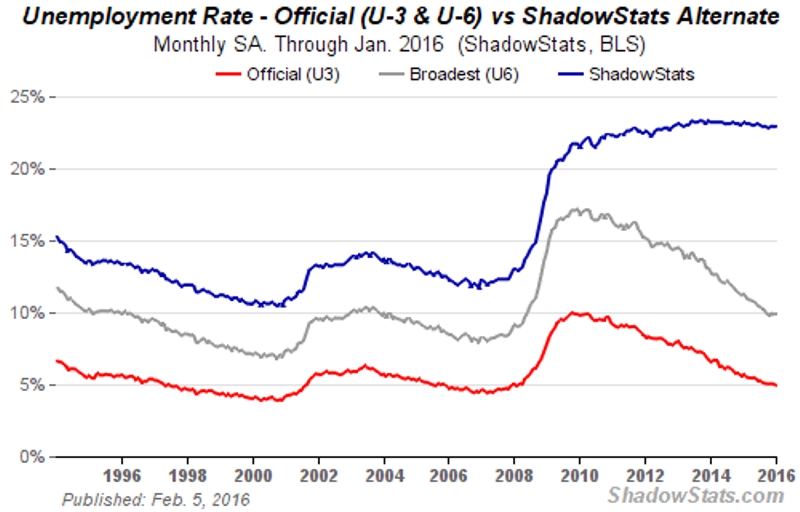Is US Unemployment 4.9%, 10% or 23%?
The US economy is perceived to be the strongest in the world. One of the reasons is that officially announced employment figures are good and getting better. However, a look behind the headline payroll statistics tells a different story.
There is a significant disconnect between the robust reported payroll numbers and other US economic signals. Commodities are in a bear market, as is transportation; manufacturing is in decline, corporate profits are shrinking, and warehouse inventories continue to grow. So most signs point to recession – except for employment.
Headline payroll statistics report the number of jobs, not the number of people employed. Thus a person with two part-time jobs would be counted twice. Further, new job creation can be a result of full time jobs being replaced by more, lower paid part-time jobs.
Another factor is that since 1997 around 2.5 million new jobs have gone to foreign born workers and only around 0.2 million to native born workers. This is, at least partly, because the former work for lower wages than the later.
Layoffs are widespread, particularly in energy, finance and tech, but also in manufacturing and pharma. Most of these are full-time jobs. If they are being replaced, it is by part-time “waiters and bar tenders”. This will be a big drag on any future economic growth.
The January 2016 US payroll report (U3) stated that the monthly unemployment rate was 4.9%, “seasonally adjusted”. When short term discouraged workers (those seeking employment for less than a year) are included, the unemployment rate (U6) is 10%. There are also around 90 million not employed and not looking for regular work. The true unemployment rate, if at least some these people wanted work would be much higher.
John Williams at shadowstats.com estimates unemployment to be 23%. And just this week Donald Trump said “Don’t believe those phony numbers when you hear 4.9 and 5% unemployment. The number’s probably 28%, 29%, as high as 35%, in fact, I even heard recently 42%”.
Chart Courtesy shadowstats.com
In conclusion, it appears that US employment is not as strong as officially reported. It is more likely to be following other indicators down, and possibly to recessionary levels. Here in Australia our official line is also that employment is strong. However, recently Australian Treasury Secretary, John Fraser, said the ridiculously high employment growth for October and November “may be overstated”. And that’s an understatement.

